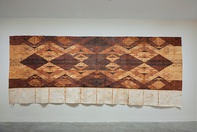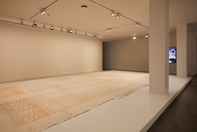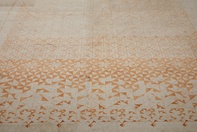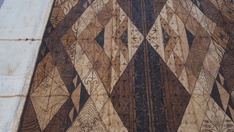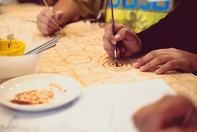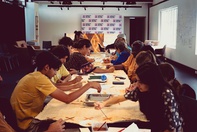Ivi
Yugambeh Country, Logan City, Queensland
2023
Displayed 2023 at Museum of Contemporary Art Australia
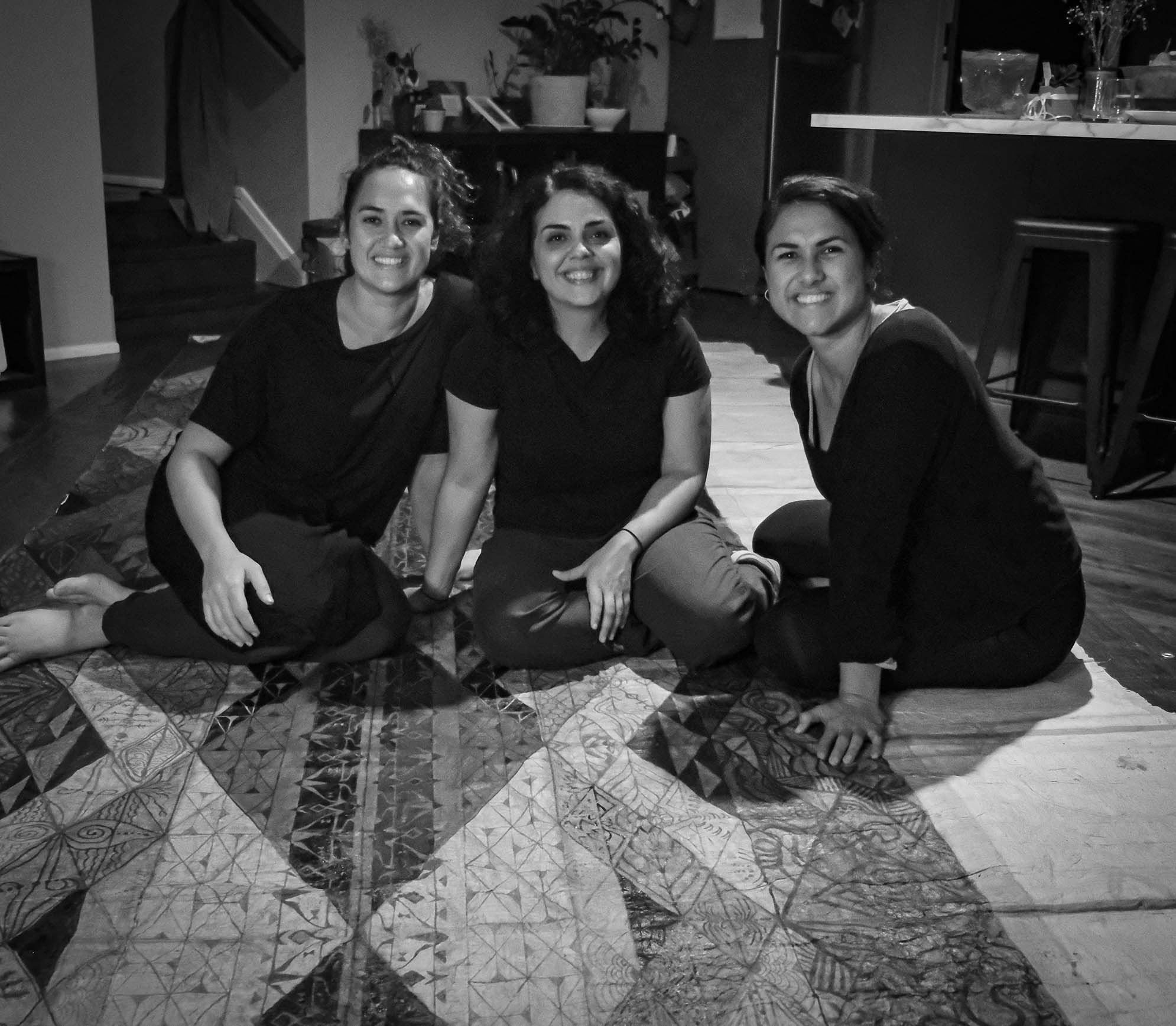
Ivi
Ruha Fifita
Born 1990, Vava’u, Kingdom of Tonga.
Lives and works Yugambeh Country, Logan City, Queensland
Minaira Fifita
Born 1992, Auckland, New Zealand.
Lives and works Yugambeh Country, Logan City, Queensland
Sheida Vazir-Zadeh
Born 1983, Tehran, Iran.
Lives and works Yugambeh Country, Logan City, Queensland
Ivi is a collaboration between artists learning about how collective Indigenous arts practices can be utilised to support community-building efforts that serve the wellbeing of neighbourhoods and communities in diverse settings. Ivi’s research and creative processes draw on the function, pedagogy, and aesthetic principles of practices intrinsic to the Pacific, and integrate scientific and faith-based systems of knowledge. Ruha Fifita, Minaira Fifita, and Sheida Vazir-Zadeh are Ivi’s Australia-based lead artists and have cumulatively participated in exhibitions nationally and internationally, including 경로를 재탐색합니다 UN/LEARNING AUSTRALIA, Seoul Museum of Art, Seoul (2021–22); Another Energy, Mori Art Museum, Tokyo (2021); Ofo Hake, UNSW Galleries, Sydney (2020); and Siu i Moana: Reaching Across the Ocean, National Gallery of Victoria, Melbourne (2016).
Image courtesy the artists
Artist text
by Lana Lopesi
Vā is the space between, the betweenness, not empty space, not space that separates but space that relates, that holds separate entities and things together in the Unity-that-is-All, the space that is context, giving meaning to things. – Maualaivao Albert Wendt (1)
The project of social cohesion is one which has seemingly existed as long as time itself. How we relate to each other and come together is increasingly important now, in a time where social division seems incredibly prescient. In the Sāmoan context, the concept of vā offers an understanding of how we are relationally tethered to each other. Vā describes the space which exists between us, which keeps us connected. It is not fixed, but rather is a malleable, negotiated space in which each of our specific positions become inherently important for reciprocal relationships. If, rather than focusing on the individual, we see the collective as being prioritised, then the spaces between us will be tended to more closely.
Caring for the relationships that exist between us is central to the work of art collective Ivi. Guided by work which seeks unity and harmony, the collective share a belief that they are all responsible to help make the world united in its diversity, and have worked together on creative, socially-engaged projects in Australia for over ten years. Together they lead collective making processes, which to date have included the Indigenous Pacific artform of ngatu (barkcloth) making.
In Kato Kakala (2022-23), led by Ruha Fifita, Minaira Fifita, and Sheida Vazirzadeh, Ivi present a series of ngatu in collaboration with communities from Australia, Aotearoa, Hawaiʻi, Tonga, and Fiji. Creating a single piece of ngatu as a collective involves a process of making and reflection, through which relationships between the collective and the communities of makers are strengthened. De-emphasising the individual artist reminds audiences of what can be made when people come together. What ends up being made and exhibited is decided in the process of creation. As Ivi’s process reminds us, everyone is a maker. Their only criteria for participation is wanting to be a part of the process. The process of making, the relationships between the makers, and the final outcome are all of equal value. Thus, in the collective making process, there’s a sense that everyone involved understands something better than they did before.
It could be easy to understand the social element of Kato Kakala as the process of making the work, but the collective process, in many ways, is the work. The coming-together of artists, makers, and community members is an example of social cohesion. The actual process of bringing people together requires skill in the same way that making ngatu does. This process is something which Ivi have been refining, and hope to share with audiences – an offering to help others engage in collective making to build harmony.
The collective has a strong conviction in the nobility of others, something which they hope to share with those they make with, and by extension audiences, bringing more people into the collective goal of social cohesion. When you’re looking at Ivi’s ngatu, what you are really looking at is a web of relation, and the many connections Ivi have made with their fellow makers from around the Pacific: a relational vā.
(1) Wendt, A. ‘Tatauing the Post-Colonial Body’, Span 42-43, April–October 1996, pp.15–29.
Ivi
4min
Artists' acknowledgements
This project is supported through Logan City Council’s Community Development Fund. Ivi thanks the institutions of Logan that supported this project as well as our friends and mentors in Waiben (Thursday Island), Keriri (Hammond Island), Yugumbeh Country (City of Logan), the Darug Nation (Mt. Druitt), and Tāmaki Makaurau (Auckland).
